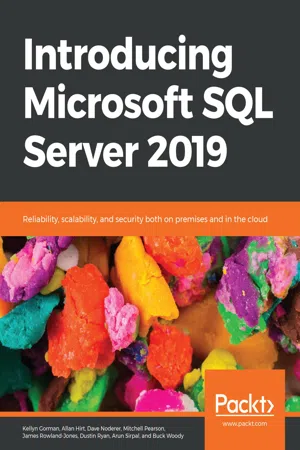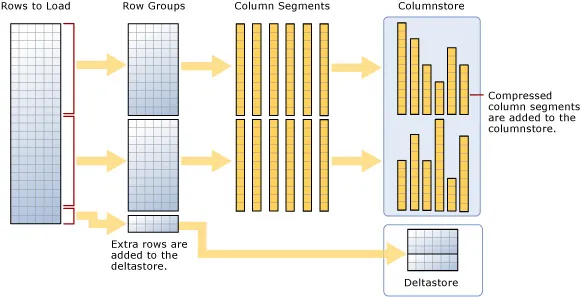
Introducing Microsoft SQL Server 2019
Reliability, scalability, and security both on premises and in the cloud
- 488 pages
- English
- ePUB (mobile friendly)
- Available on iOS & Android
Introducing Microsoft SQL Server 2019
Reliability, scalability, and security both on premises and in the cloud
About this book
Explore the impressive storage and analytic tools available with the in-cloud and on-premises versions of Microsoft SQL Server 2019.
Key Features
- Gain insights into what's new in SQL Server 2019
- Understand use cases and customer scenarios that can be implemented with SQL Server 2019
- Discover new cross-platform tools that simplify management and analysis
Book Description
Microsoft SQL Server comes equipped with industry-leading features and the best online transaction processing capabilities. If you are looking to work with data processing and management, getting up to speed with Microsoft Server 2019 is key.
Introducing SQL Server 2019 takes you through the latest features in SQL Server 2019 and their importance. You will learn to unlock faster querying speeds and understand how to leverage the new and improved security features to build robust data management solutions. Further chapters will assist you with integrating, managing, and analyzing all data, including relational, NoSQL, and unstructured big data using SQL Server 2019. Dedicated sections in the book will also demonstrate how you can use SQL Server 2019 to leverage data processing platforms, such as Apache Hadoop and Spark, and containerization technologies like Docker and Kubernetes to control your data and efficiently monitor it.
By the end of this book, you'll be well versed with all the features of Microsoft SQL Server 2019 and understand how to use them confidently to build robust data management solutions.
What you will learn
- Build a custom container image with a Dockerfile
- Deploy and run the SQL Server 2019 container image
- Understand how to use SQL server on Linux
- Migrate existing paginated reports to Power BI Report Server
- Learn to query Hadoop Distributed File System (HDFS) data using Azure Data Studio
- Understand the benefits of In-Memory OLTP
Who this book is for
This book is for database administrators, architects, big data engineers, or anyone who has experience with SQL Server and wants to explore and implement the new features in SQL Server 2019. Basic working knowledge of SQL Server and relational database management system (RDBMS) is required.
Frequently asked questions
- Essential is ideal for learners and professionals who enjoy exploring a wide range of subjects. Access the Essential Library with 800,000+ trusted titles and best-sellers across business, personal growth, and the humanities. Includes unlimited reading time and Standard Read Aloud voice.
- Complete: Perfect for advanced learners and researchers needing full, unrestricted access. Unlock 1.4M+ books across hundreds of subjects, including academic and specialized titles. The Complete Plan also includes advanced features like Premium Read Aloud and Research Assistant.
Please note we cannot support devices running on iOS 13 and Android 7 or earlier. Learn more about using the app.
Information
1. Optimizing for performance, scalability and real-time insights
Hybrid transactional and analytical processing (HTAP)
Clustered Columnstore Indexes

Figure 1.1: Loading data into a non-clustered columnstore index

Figure 1.2: Loading a clustered columnstore index
Adding Clustered Columnstore Indexes to memory-optimized tables
Disk-based tables versus memory-optimized tables
Table of contents
- About the Authors
- Preface
- 1. Optimizing for performance, scalability and real-time insights
- 2. Enterprise Security
- 3. High Availability and Disaster Recovery
- 4. Hybrid Features – SQL Server and Microsoft Azure
- 5. SQL Server 2019 on Linux
- 6. SQL Server 2019 in Containers and Kubernetes
- 7. Data Virtualization
- 8. Machine Learning Services Extensibility Framework
- 9. SQL Server 2019 Big Data Clusters
- 10. Enhancing the Developer Experience
- 11. Data Warehousing
- 12. Analysis Services
- 13. Power BI Report Server
- 14. Modernization to the Azure Cloud